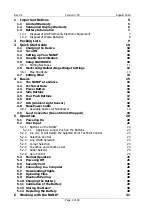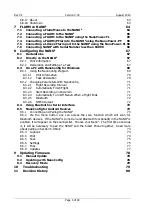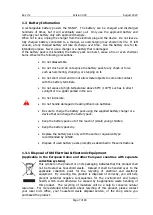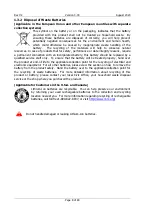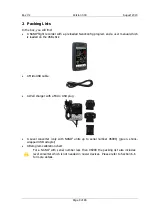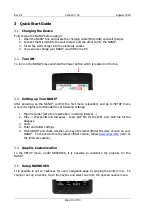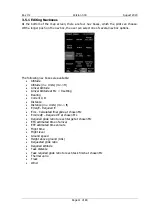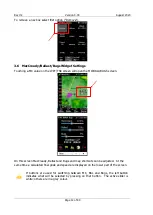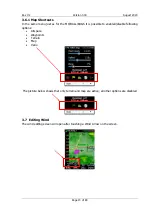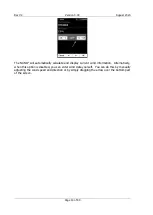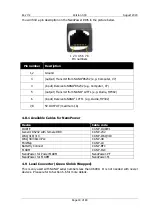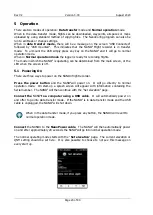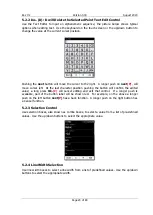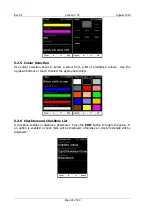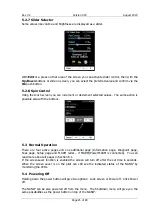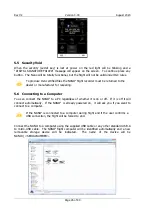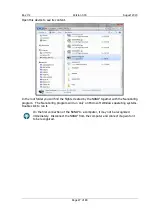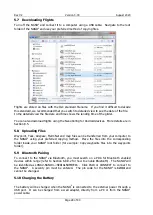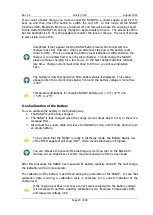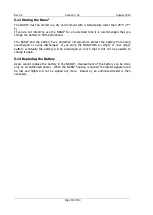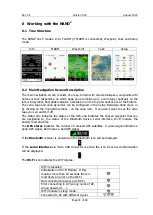
Rev #2
Version 3.00
August 2020
Page 16 of 80
At the top of the unit there is a micro USB connector which is used for charging and
transferring data. The power button is next to the micro USB.
The internal solid-state disk is preloaded with the NanoConfig program and the NANO
4
Manual. This program is used for uploading a flight declaration and/or changing the settings
of the NANO
4
. One can also upload flight declarations by using a serial interface cable or a
Bluetooth connection by third party applications (SeeYou, XCsoar), or NanoConfig for
Android.
4.2
Technical Data
Hardware
•
An ARM CPU
•
A 4 GByte memory solid state memory
•
A VGA 640*480 colour pixel TFT sunlight readable LCD
•
A 56-channel GPS receiver
•
An engine noise level sensor
•
A pressure altitude sensor measuring up to 16000 m
Input and Output
•
A USB interface (mass storage device)
•
A serial RS232 interface for PDA connection
•
A Bluetooth interface for PDA connection
•
A Wi-Fi interface (in development)
Size and Weight
•
Outline dimension: 107x70x18 mm
•
Weight: ~150 g
4.3
Power Button
A long press on the power button will power on the NANO
4
. When the NANO
4
is running a
short press on the power button will lock the NANO
4
screen and shut down the backlight of
the screen. Another press will turn the screen back on. A longer press when the screen is
on will show a menu "two options, power off, or lock screen" with the options to power off,
or to lock the screen.
When flying, a short push on the power button will record a pilot-initiated event,
and the flight recorder will then log 30 fixes, with a recording rate of one fix per
second.
4.4
Side Buttons
The side buttons has several actions (Zoom, Volume, up/down in menu).
When on an info page, a push on the side buttons will increase or decrease the sound
volume. When on the map pages, those buttons will have a zoom function and when in the
setup menu you will be able to move from menu to menu.

